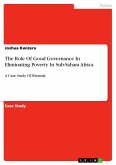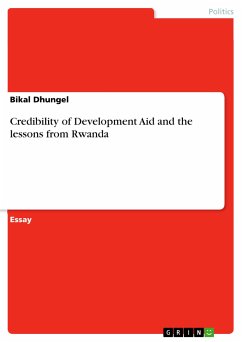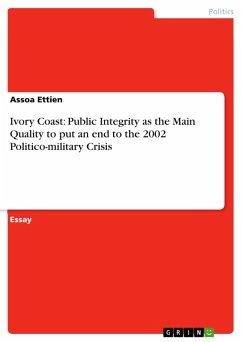Bachelor Thesis from the year 2009 in the subject Politics - Region: Africa, grade: 1,3, Helmut Schmidt University - University of the Federal Armed Forces Hamburg (Internationale Politik), language: English, abstract: 1. Introduction Since the fall of the Barre regime in 1991, Somalia has been the most profound and outstanding example of state failure not only in Africa but the entire world. For almost 20 years Somalia has been lost in a vicious circle which the author of this paper calls “the failure system”. It is a system of mutually reinforcing factors consisting of clan violence and a corresponding history of real or imagined marginalisation, the establishment of war economics, various jihads and last but not least the interference of a multitude of external actors. The question of this bachelor thesis is: What role did external actors take in the process of state failure in Somalia? My hypothesis is, that the Somali state collapse cannot be seen as a purely internal phenomenon but rather as a layered systemic process that has been influenced by external actors on a massive scale. The main purpose of this bachelor thesis is to outline the role of external actors in the Somali state collapse. Albeit the focus of this work is clearly the external dimension of this conflict, we shall not neglect the internal actors and factions in Somalia. Especially after the Ethiopian invasion of 2006 and the begin of the international anti-pirate mission at the Horn of Africa a whole pile of scientific literature has been written on external actors and their strategic motivations in Somalia. But usually these publications only focus on the external actors and their motivations without appropriately addressing internal dynamics. In order to bridge the gap of understanding between the layers of internal and external conflict dimensions, this work tries to create a holistic and systemic big picture view of the Somali state collapse by outlining historical, sociological, internal and external factors alike. To achieve this goal, this work has been divided into three main parts. The first part will briefly describe the Somali history. I will at first outline the historic developments before 1991 to give an impression of the long-term development of the country. Subsequently the clan structure and its relevance will be addressed to answer the question why such a high internal conflict potential could arise in Somalia despite far reaching ethnic, cultural, religious and lingual homogeneity. Afterwards the historic events in the state-failure period from 1991-2009 will be described. The main sources for this









